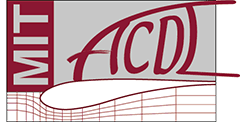Abstract: This talks presents a case study in the incorporation of high-fidelity CFD analysis into the design of an unconventional electric super-short takeoff and landing (eSTOL) aircraft currently in development by Electra.aero. eSTOL aircraft use a strong aeropropulsive interaction - the lift augmentation from propellers blowing over a wing with deflected flaps - to increase the maximum lift coefficient of the aircraft and achieve takeoff and landing ground rolls as short as 100 ft. The maximum wing lift coefficient and associated takeoff and landing distances therefore depend strongly on the installed power of the aircraft and the co-design of the propellers, wings, and flaps. There is little existing design guidance or medium-fidelity design tools for this class of aircraft, and so CFD tools were used early in design process for configuration development, performance estimate, and stability and control analysis. Some key takeaways from the computational analysis and design of this vehicle will be discussed, including the unique design elements of aeropropulsively coupled aircraft, the effects of powered high lift on stability and control, and some of the practical challenges of using CFD to explore an unfamiliar design space.
Bio: Chris Courtin is the lead flight physics engineer at Electra.aero and a Ph.D candidate working with John Hansman. His research focuses on the aerodynamic design and flight control of eSTOL aircraft.
(student host will be Michael Brennan)

